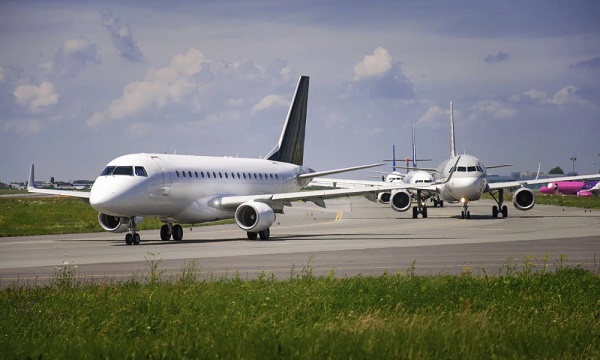When the Department of Transportation wrote its tarmac delay rule, it probably didn’t mean it to be taken quite so literally. According to research from Dartmouth College and the Massachusetts Institute of Technology, the rule — which was established in 2010 to cut down on lengthy passenger delays — may actually contribute to an increase in passenger delays. The study shows that the airlines have become more likely to cancel flights that are delayed, rather than being fined by the DOT for violating the rules regarding tarmac delays.
The tarmac delay rule was established in 2010 as an attempt to prevent passengers from being stuck on planes for hours and hours at a time while the flight waited to depart (The Los Angeles Times says that the rule went into effect following severe weather during the winters of 2006 and 2007, when tarmac delays of up to 11 hours were reported).
Under the current regulations, a commercial flight must either take off from its departure airport — or allow its passengers to deplane — no more than three hours after the cabin door has closed, and passengers must be allowed to exit the aircraft no more than three hours after the flight lands at its destination. If a domestic flight violates that rule, the DOT can fine the airline up to $27,500 for each passenger on the plane.
And although the rule has decreased the number of lengthy tarmac delays, the airlines have responded by canceling flights that might be at risk of exceeding the three-hour limit, which actually increases the amount of passenger delays. According to the Dartmouth-MIT researchers:
“Each passenger-minute of tarmac time saving is achieved at the cost of an increase of approximately three passenger-minutes in total passenger delays. This is due primarily to increases in flight cancellations, resulting in passengers requiring rebooking and often leading to extensive delays in reaching their final destinations.”
The study authors have suggested that this negative effect could be reduced if the tarmac time limit was increased to 3.5 hours, and if it was only applicable to flights that departed before 5 p.m. — which would give passengers additional options to rebook their flights if there was a cancelation.
The story was originally published on Road Warrior Voices
Related Post:
DOT Ceases Discrimination to Disabled Air Passengers
US DOT Regulations on Flight Delay Compensation
DOT Regulation for Airlines: Free cancellation within 24 hour window

